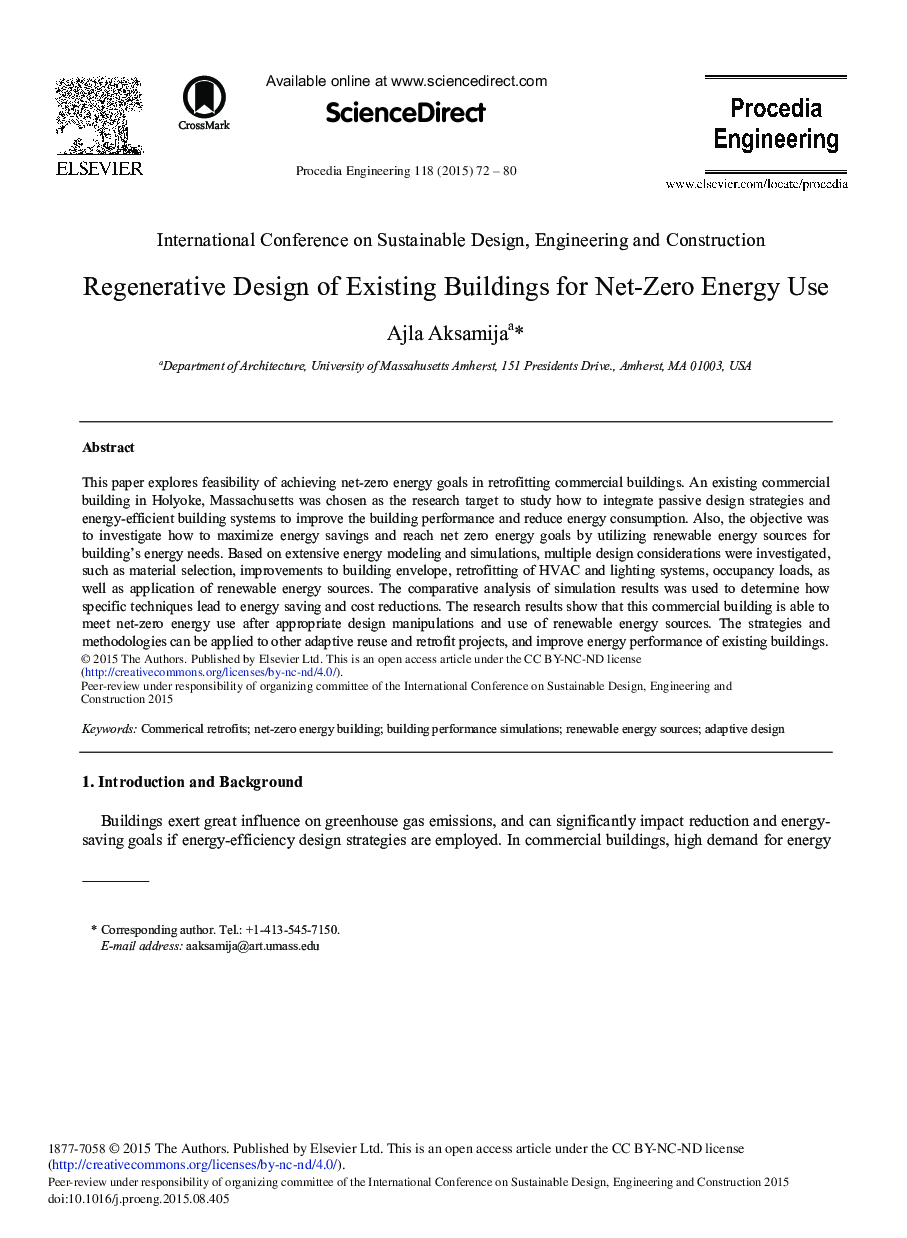| Article ID | Journal | Published Year | Pages | File Type |
|---|---|---|---|---|
| 855581 | Procedia Engineering | 2015 | 9 Pages |
This paper explores feasibility of achieving net-zero energy goals in retrofitting commercial buildings. An existing commercial building in Holyoke, Massachusetts was chosen as the research target to study how to integrate passive design strategies and energy-efficient building systems to improve the building performance and reduce energy consumption. Also, the objective was to investigate how to maximize energy savings and reach net zero energy goals by utilizing renewable energy sources for building's energy needs. Based on extensive energy modeling and simulations, multiple design considerations were investigated, such as material selection, improvements to building envelope, retrofitting of HVAC and lighting systems, occupancy loads, as well as application of renewable energy sources. The comparative analysis of simulation results was used to determine how specific techniques lead to energy saving and cost reductions. The research results show that this commercial building is able to meet net-zero energy use after appropriate design manipulations and use of renewable energy sources. The strategies and methodologies can be applied to other adaptive reuse and retrofit projects, and improve energy performance of existing buildings.
